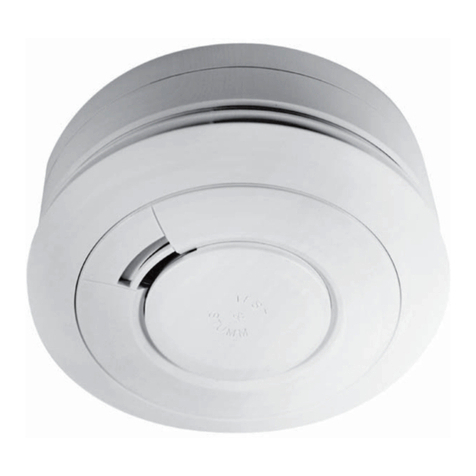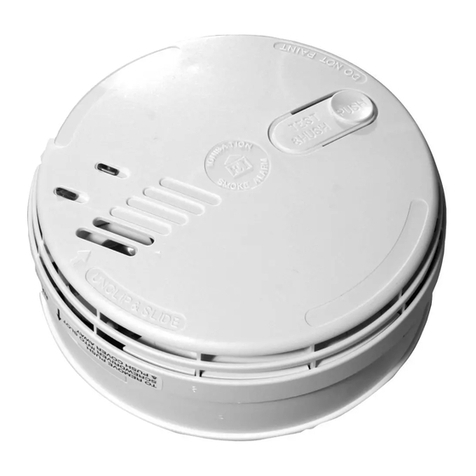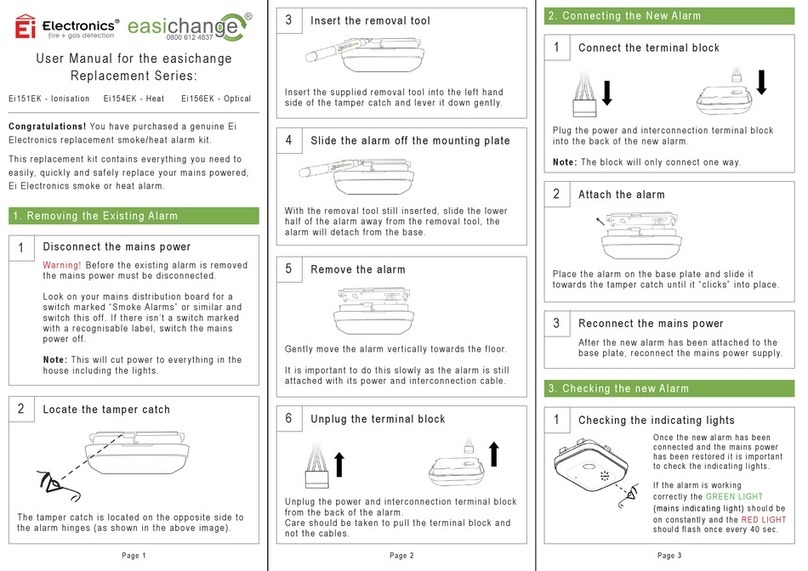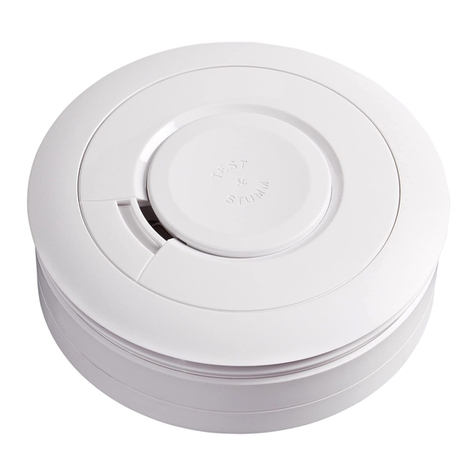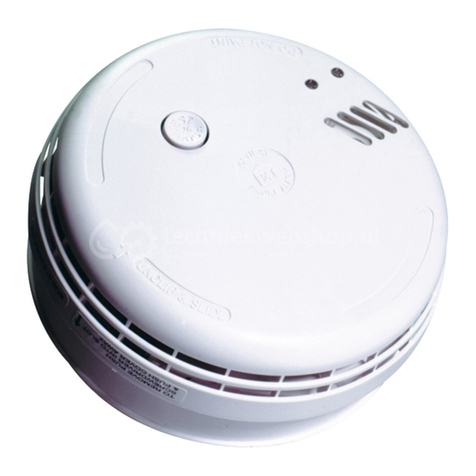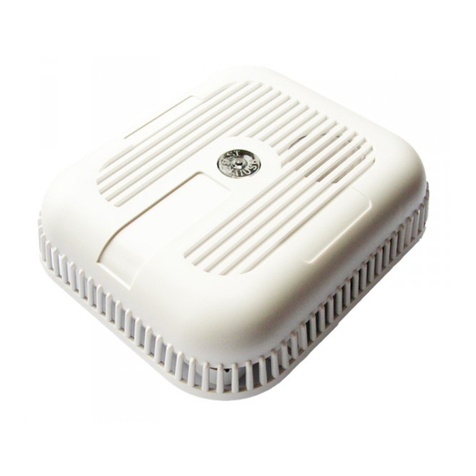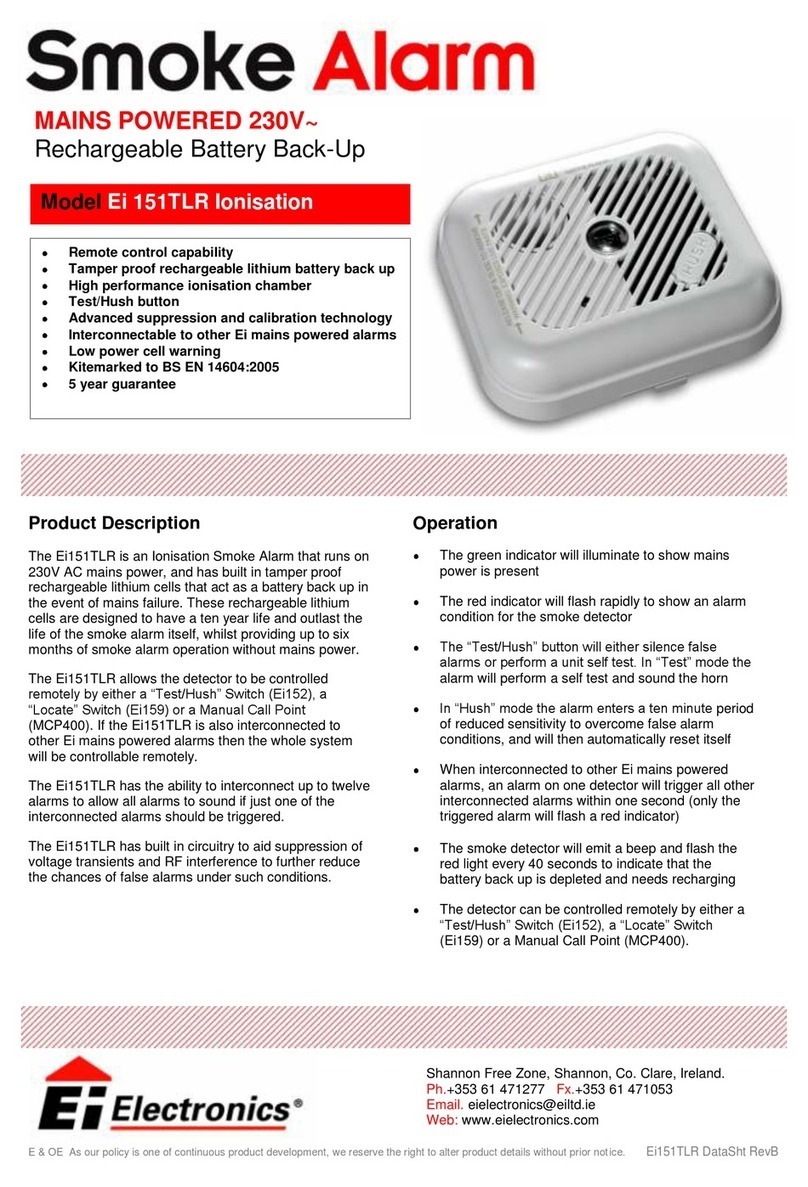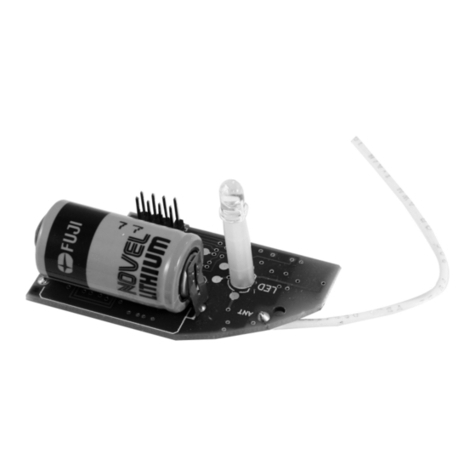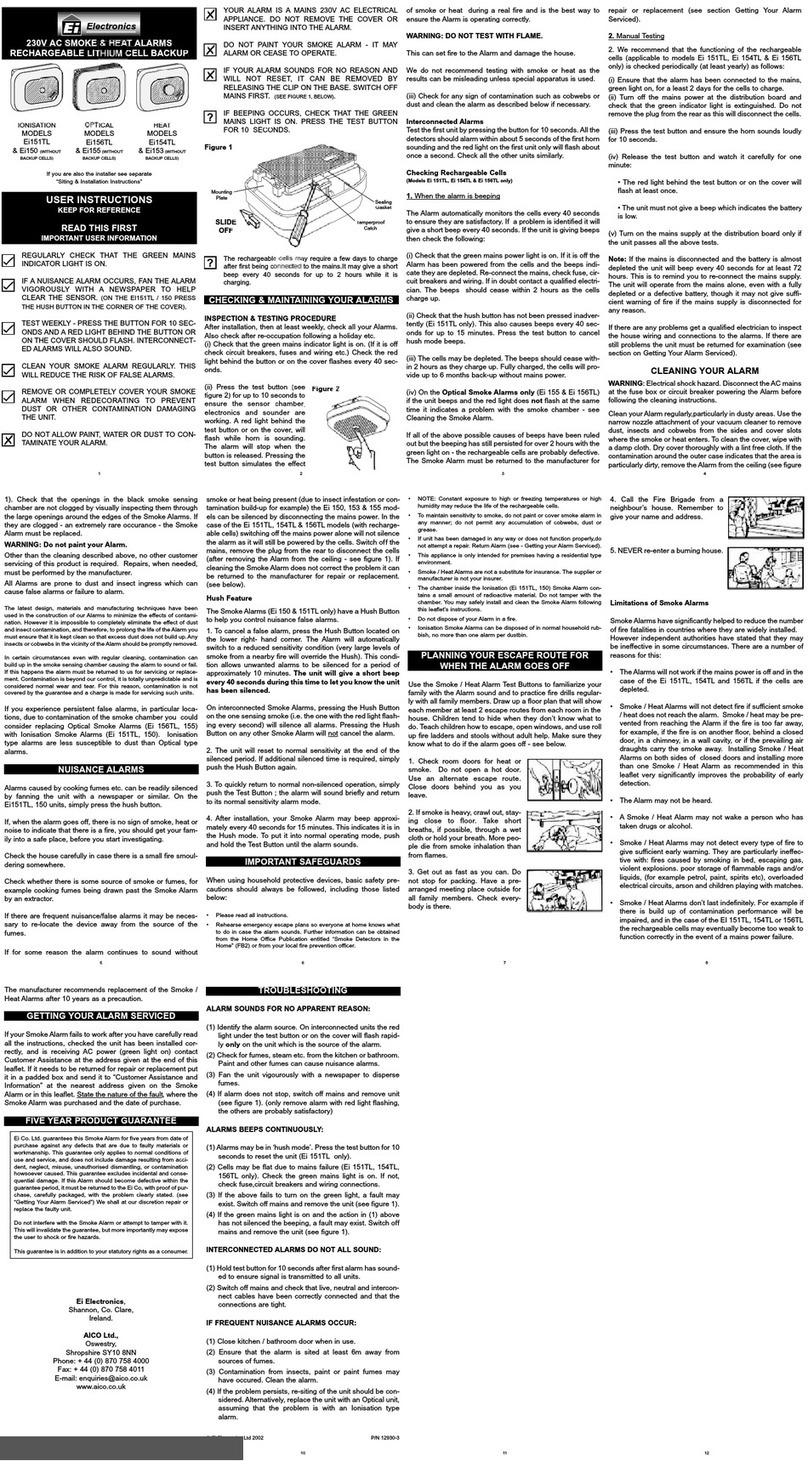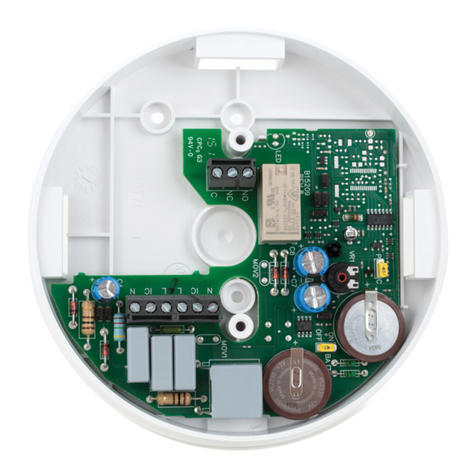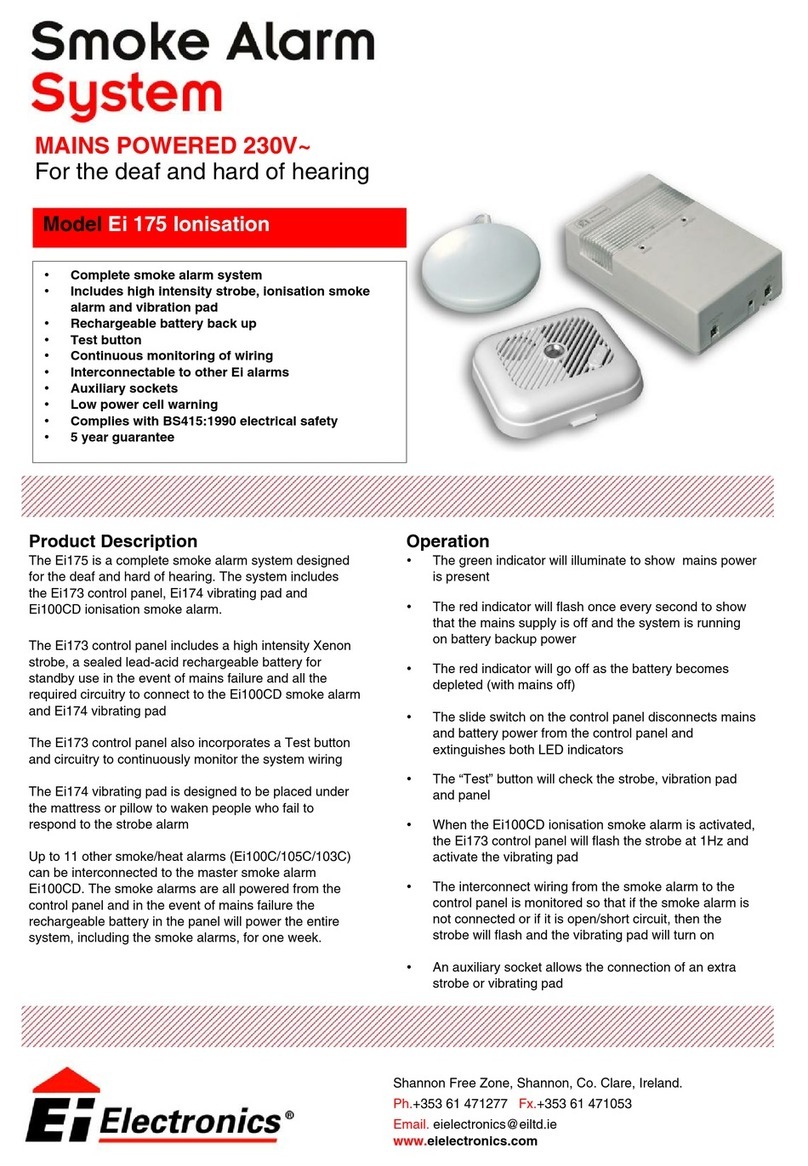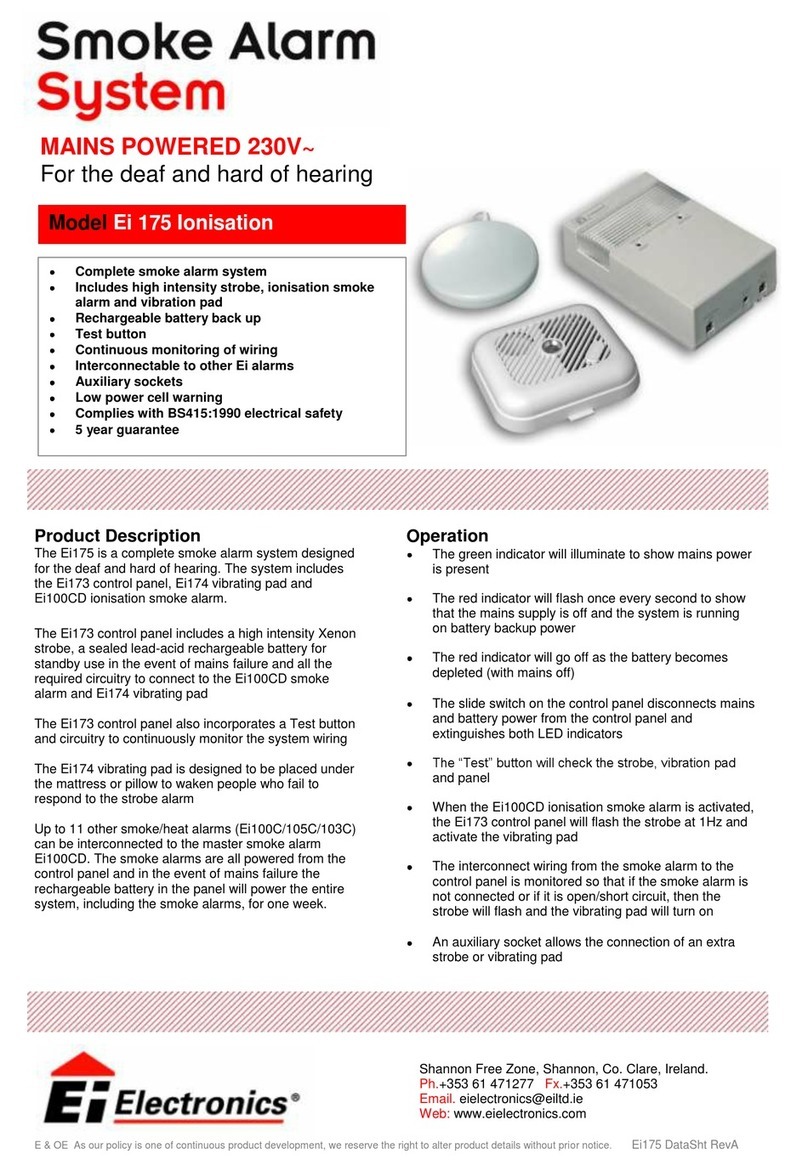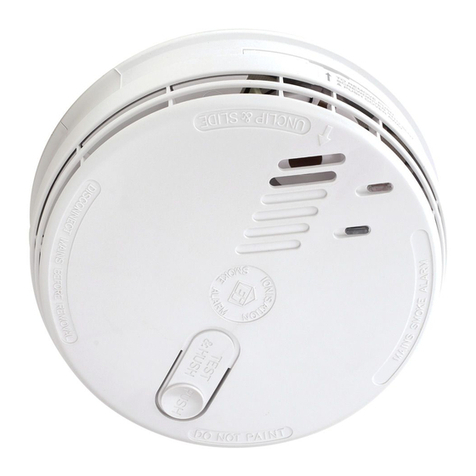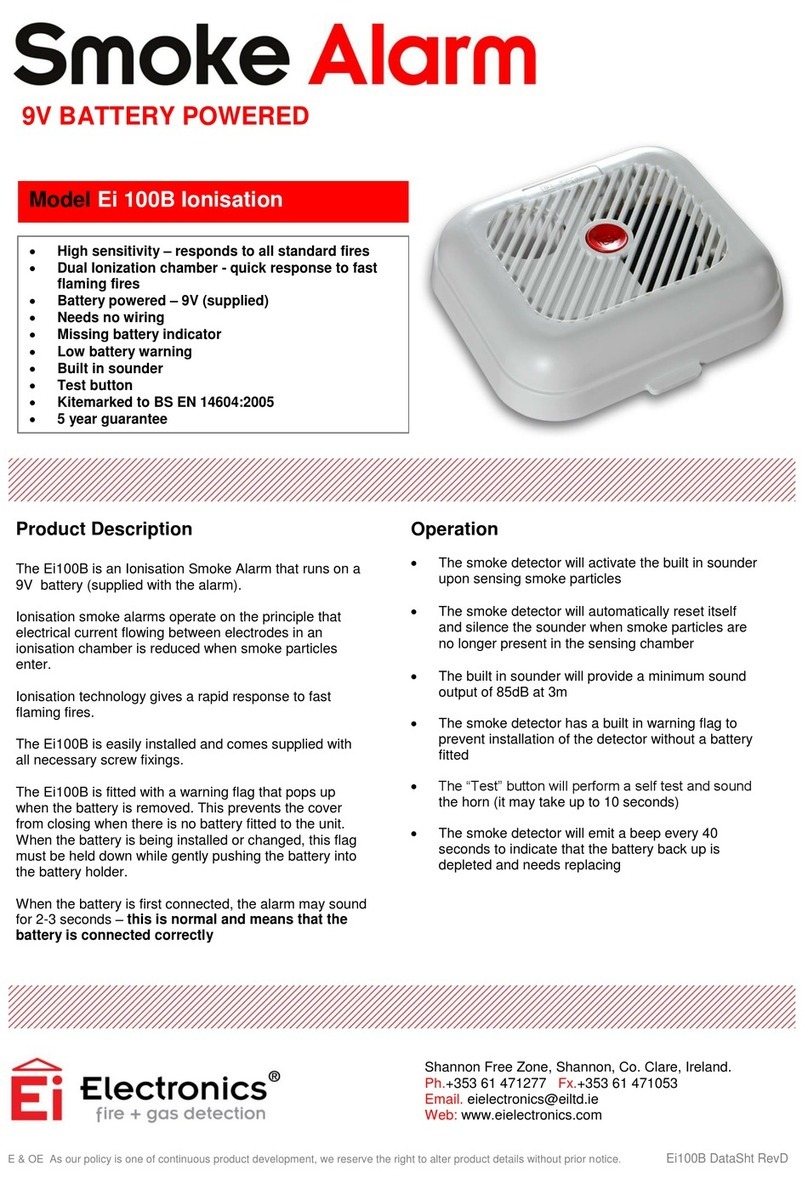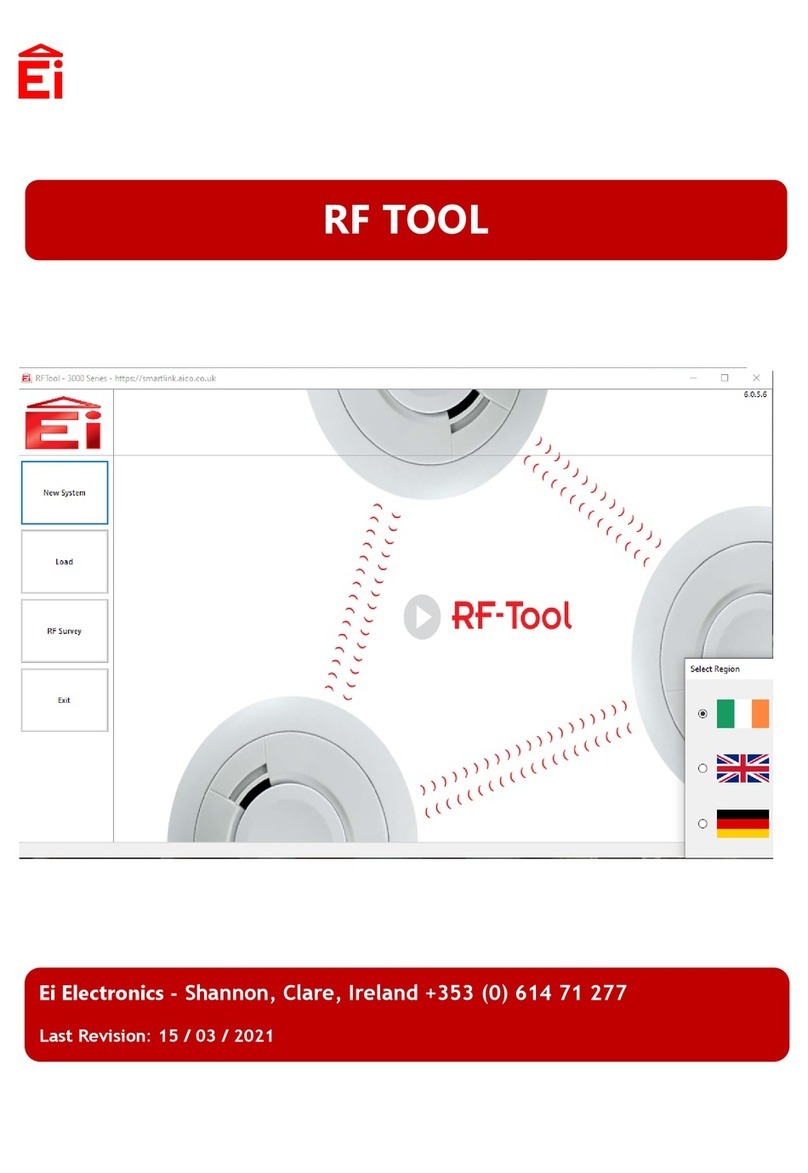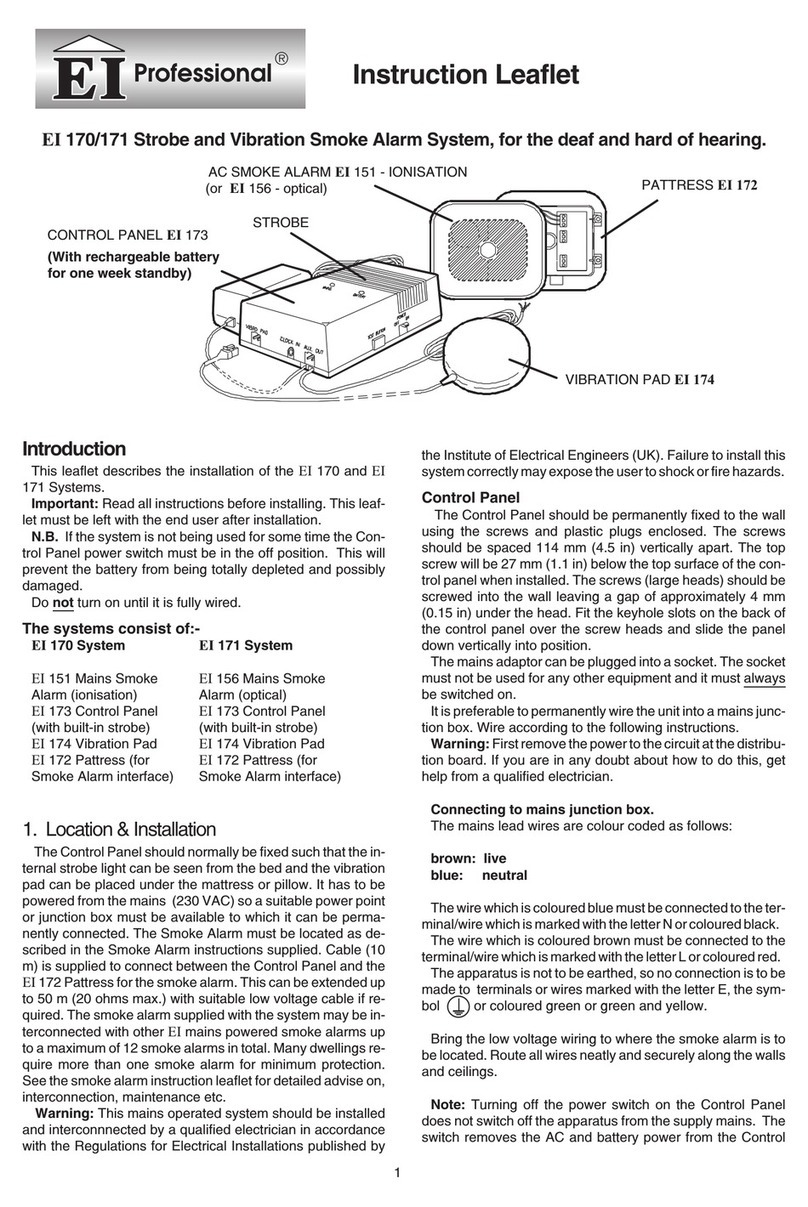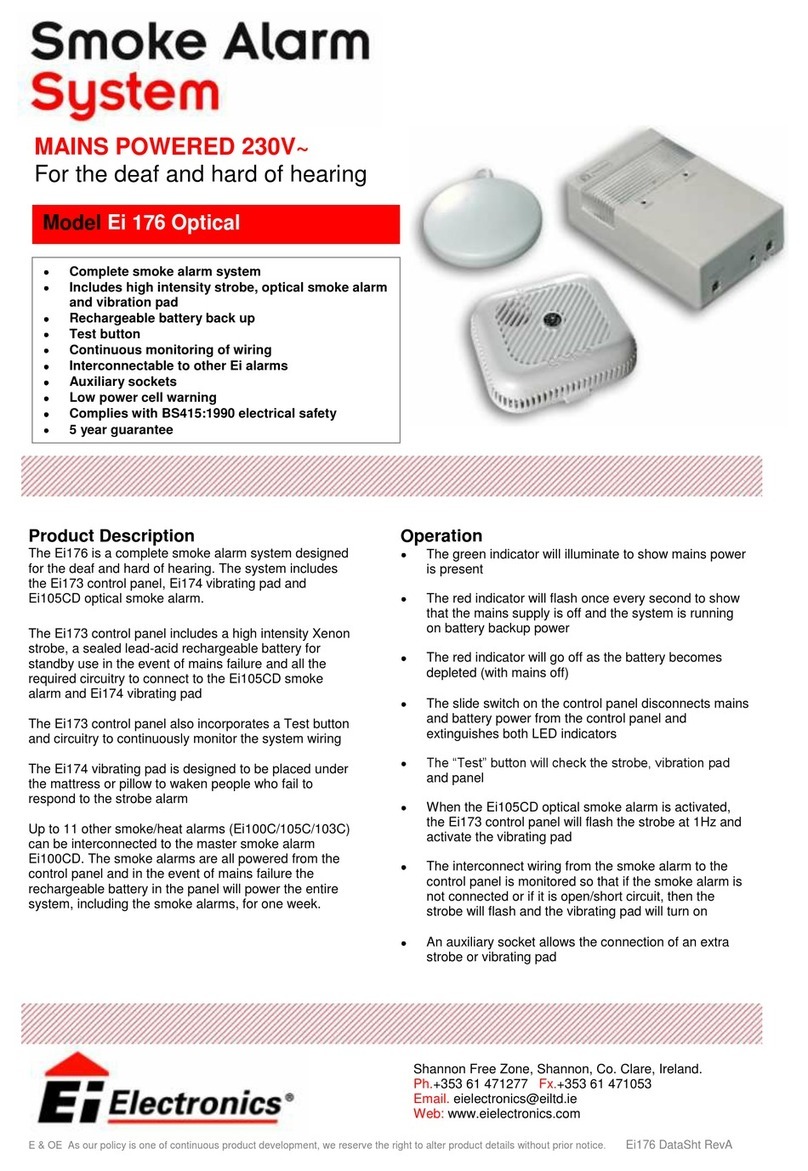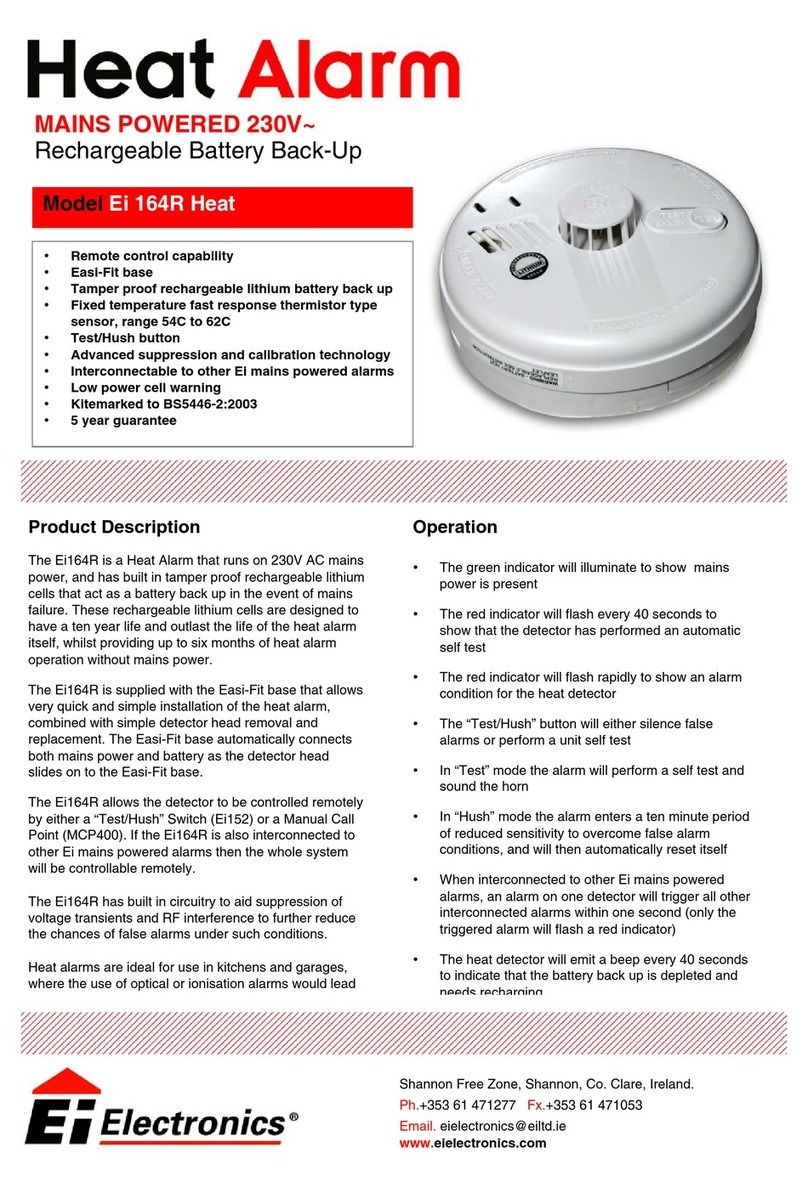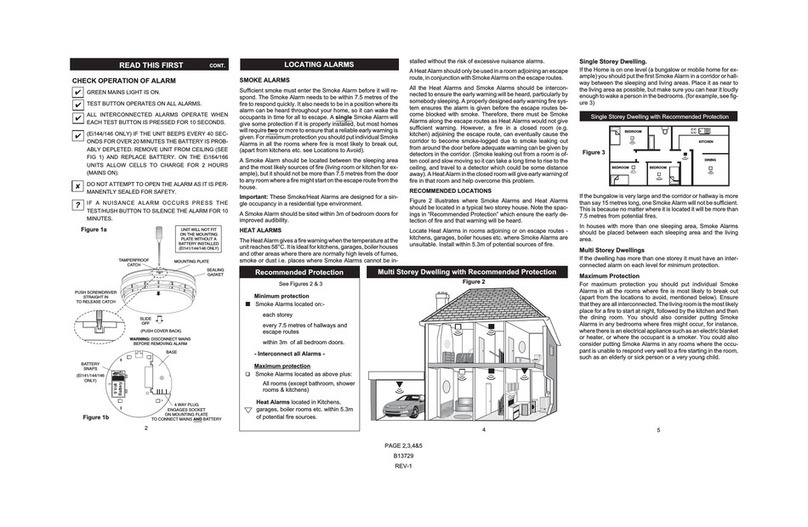
Check the house carefully in case there is a small fire smould-
ering somewhere.
Check whether there is some source of smoke or fumes, for ex-
ample cooking fumes being drawn past the Smoke Alarm by an
extractor.
If there are frequent nuisance/false alarms it may be necessary
to re-locate the device away from the source of the fumes. If for
some reason the alarm continues to sound without smoke or
heat being present (due to insect infestation or contamination
build-up for example) the units can be silenced by disconnecting
the mains power and removing the unit (see figure 1). If cleaning
the Alarm does not correct the problem it can be returned to the
manufacturer for repair or replacement (see Getting Your Alarm
Serviced below).
Hush Feature
All the Smoke Alarms have a combined Test/Hush Button to
help you control nuisance false alarms.
1. To cancel a false alarm, press the Test/Hush Button located
on the cover. The Alarm will automatically switch to a reduced
sensitivity condition (very large levels of smoke from a nearby
fire will override the Hush on the smoke alarms). This condition
allows unwanted alarms to be silenced for a period of approxi-
mately 10 minutes.
The unit will flash the red light every 10 seconds (instead of the
normal 40 seconds) to indicate the sensitivity is reduced. At the
end of the hush period the Heat Alarms (EI 144/143) will give
two short beeps.
On interconnected Alarms, pressing the Test/Hush Button on
the one sensing smoke (i.e. the one with the red light flashing
every second) will silence all alarms. Pressing the Hush Button
on any other Alarm will not cancel the alarm.
2. The unit will reset to normal sensitivity at the end of the si-
lenced period. If additional silenced time is required, simply
push the Test/Hush Button again.
When using household protective devices, basic safety precau-
tions should always be followed, including those listed below:
•Please read all instructions.
•Rehearse emergency escape plans so everyone at home
knows what to do in case the alarm sounds.
•NOTE: Constant exposure to high or freezing temperatures
or high humidity may reduce the life of the battery.
•To maintain sensitivity to smoke, do not paint or cover
smoke alarm in any manner; do not permit any accumula-
tion of cobwebs, dust or grease.
•If the unit has been damaged in any way or does not function
properly,do not attempt a repair. Return Alarm (see - Getting
your Alarm Serviced).
•This appliance is only intended for premises having a resi-
dential type environment.
•Smoke / Heat Alarms are not a substitute for insurance. The
supplier or manufacturer is not your insurer.
•
•Do not dispose of your Alarm in a fire.
Use the Smoke / Heat Alarm Test Buttons to familiarize your
family with the Alarm sound and to practice fire drills regularly
with all family members. Draw up a floor plan that will show each
member at least 2 escape routes from each room in the house.
Children tend to hide when they don’t know what to do. Teach
children how to escape, open windows, and use roll up fire lad-
ders and stools without adult help. Make sure they know what to
do if the alarm goes off - see below.
1. Check room doors for heat or smoke.
Do not open a hot door. Use an alter-
nate escape route. Close doors behind
you as you leave.
2. If smoke is heavy, crawl out, staying
close to floor. Take short breaths, if
possible, through a wet cloth or hold
your breath. More people die from
smoke inhalation than from flames.
3. Get out as fast as you can. Do not
stop for packing. Have a prearranged
meeting place outside for all family
members. Check everybody is there.
4. Call the Fire Brigade from a neigh-
bour’s house. Remember to give your
name and address.
5. NEVER re-enter a burning house.
Limitations of Smoke / Heat Alarms
Smoke / Heat Alarms have significantly helped to reduce the
number of fire fatalities in countries where they are widely in-
stalled.
However independent authorities have stated that they may be
ineffective in some circumstances. There are a number of rea-
sons for this:
•The Alarms will not work if the mains power is off and the
back-up battery is depleted. On the EI141/144/146 alarms
the batteries should be replaced annually and when the unit
gives a low battery beep.
•Smoke/Heat Alarms will not detect fire if sufficient smoke /
heat does not reach the alarm. Smoke/Heat may be pre-
vented from reaching the Alarm if the fire is too far away, for
example, if the fire is on another floor, behind a closed door,
in a chimney, in a wall cavity, or if the prevailing air draughts
carry the smoke / heat away. Installing Smoke/Heat Alarms
on both sides of closed doors and installing more than one
Smoke/Heat Alarm as recommended in the ‘Siting & Instal-
lation leaflet’ very significantly improves the probability of
early detection.
•The Alarm may not be heard.
•A Smoke / Heat Alarm may not wake a person who has
taken drugs or alcohol.
•Smoke / Heat Alarms may not detect every type of fire to
give sufficient early warning. They are particularly ineffec-
tive with: fires caused by smoking in bed, escaping gas, vio-
lent explosions, poor storage of flammable rags and/or
liquids, (for example petrol, paint, spirits etc), overloaded
electrical circuits, arson and children playing with matches.
•Fire Authorities (including the Home Office, UK) recom-
mend that both Optical and Ionisation Smoke Alarms should
be fitted for the fastest response to all types of fires.
•Smoke / Heat Alarms don’t last indefinitely. For example if
there is a build up of contamination, performance will be im-
paired.
The manufacturer recommends replacement of the Smoke /
Heat Alarms after 10 years as a precaution.
If your Alarm fails to work after you have carefully read all the in-
structions, checked the unit has been installed correctly, and is
receiving AC power (green light on) contact Customer Assis-
tance at the address given at the end of this leaflet. If it needs to
be returned for repair or replacement put it in a padded box and
send it to “Customer Assistance and Information” at the nearest
address given on the Alarm or in this leaflet. Do not snap on the
mounting plate as this connects the battery and the unit may
beep or alarm in the post. State the nature of the fault, where the
Alarm was purchased and the date of purchase.
EI Electronics Ltd. guarantees this Alarm (excluding the battery on
the EI141/144/146 models) for five years from date of purchase
against any defects that are due to faulty materials or workmanship.
This guarantee only applies to normal conditions of use and service,
and does not include damage resulting from accident, neglect, mis-
use, unauthorised dismantling, or contamination howsoever
caused. This guarantee excludes incidental and consequential
damage. This guarantee does not cover costs associated with the
removal and/or installation of alarms. If this Alarm should become
defective within the guarantee period, it must be returned to EI
Electronics, with proof of purchase, carefully packaged, with the
problem clearly stated. (see “Getting Your Alarm Serviced”) We
shall at our discretion repair or replace the faulty unit.
Do not interfere with the Alarm or attempt to tamper with it. This will
invalidate the guarantee, but more importantly may expose the user
to shock or fire hazards.
This guarantee is in addition to your statutory rights as a consumer.
Aico Ltd., Mile End Business Park,
Maesbury Rd, Oswestry, Shropshire SY10 8NN, U.K.
Telephone : 0870 758 4000
www.aico.uk
EI Electronics. Shannon, Co Clare, Ireland.
www.eielectronics.com
4. INTERCONNECTED ALARMS DO NOT ALL SOUND:
(1) Hold test button for 10 seconds after first alarm has sounded to en-
sure signal is transmitted to all units.
(2) Switch off mains and check that live, neutral and interconnect ca-
bles have been correctly connected and that the connections are
tight.
PAGE 6,7,8&9
B13730
REV-1
7
68
IMPORTANT SAFEGUARDS
GETTING YOUR ALARM SERVICED
FIVE YEAR PRODUCT GUARANTEE
PLANNING YOUR ESCAPE ROUTE FOR WHEN
THE ALARM GOES OFF
TROUBLESHOOTING
9
©EI Electronics 2001 P/N B13730 Rev 1
CONT.
